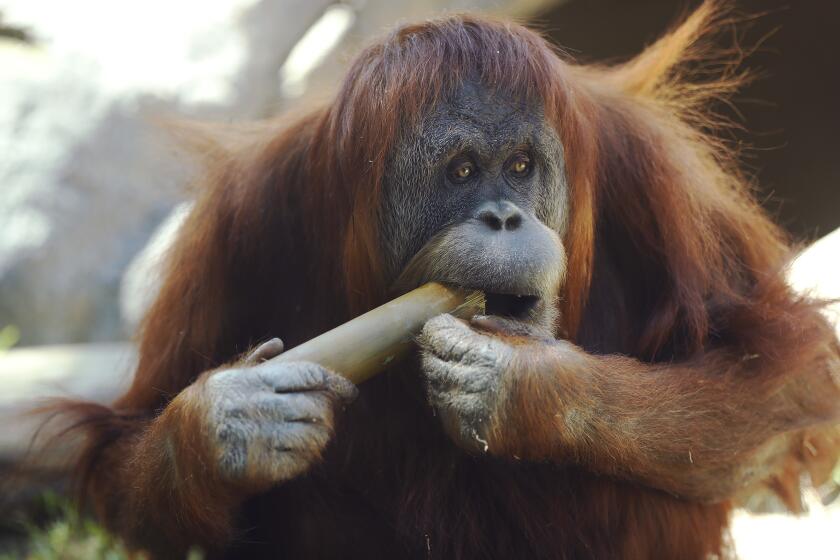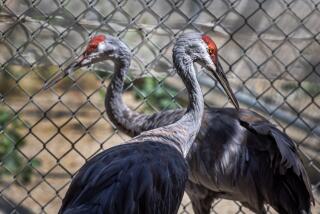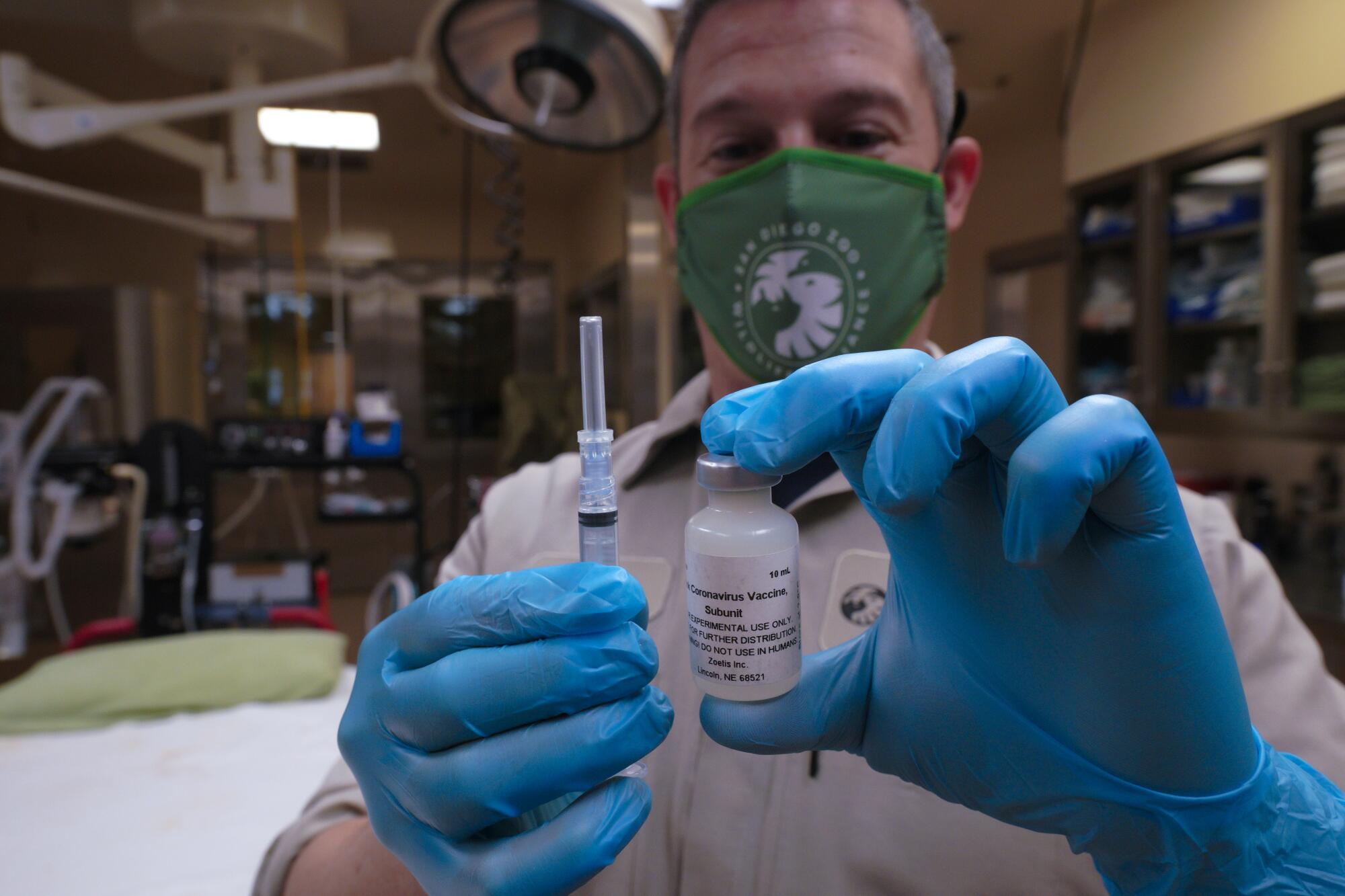
- Share via
SAN DIEGO — How do you vaccinate a tiger? Or a cheetah? Or a baboon?
Carefully — very carefully. And with lots of training and treats.
As coronavirus cases surge throughout the region, the San Diego Zoo and the Safari Park are hustling to immunize an array of animals that could give Noah’s Ark a run for its money, including tigers, Vervet monkeys, hyenas and other critters that the staff thinks could be vulnerable to the virus. By the end of this week, zookeepers will have doled out first doses to roughly 250 animals, many of them endangered species.
“We’re in a very similar situation to where us humans were just a few months ago, when vaccines were [first] available,” said Dr. Hendrik Nollens, who leads the veterinary teams for the zoo and Safari Park. “Now it’s this race against time. Who’s going to get there first: vaccine or virus?”
Recent events have given these efforts fresh urgency. On Monday, the Safari Park learned that five of its six Sumatran tigers have coronavirus infections after testing stool samples from the animals. Keepers first suspected something was amiss when Rakan — a 300-pound, 4-year-old male — seemed sluggish and wasn’t scarfing down meals with his usual gusto. Staffers then noticed that he was coughing slightly.
Three of the other tigers are also showing symptoms of COVID-19, mainly coughing and low energy, and all of them are being closely monitored. The news comes days after the zoo learned that both of its snow leopards, Ramil and Naphisa, had COVID-19. Both leopards had mild coughs but have nearly made a full recovery, said Lisa Peterson, executive director of the Safari Park.
Both animals are coughing but are already showing signs of improvement, according to the organization
Though the organization says it’s not sure how the snow leopards or tigers got infected, it’s probable they caught the virus from an employee who was infected but didn’t have symptoms. That’s what happened back in mid-January, when the Safari Park’s gorilla troop contracted the virus.
Both facilities are hoping that a two-pronged strategy of stricter masking and vaccination will limit future transmission. Following the snow leopard infections, all employees must now wear masks when working with animals that the veterinary staff believes could be susceptible to COVID-19 — regardless of whether employees are fully vaccinated, or whether they’re indoors or outdoors. Previously, only workers who weren’t fully vaccinated had to don masks.
It’s the first known case of non-human apes becoming infected with the novel coronavirus
The organization has also continued to vaccinate animals at both parks. Those efforts began in late January, when the zoo inoculated some of its orangutans and bonobos, marking the first time apes were immunized against the virus.
And though trying to poke a wild animal with a needle might sound like a recipe for disaster, it’s something zoo and Safari Park workers do routinely through a combination of coaxing and conditioning.
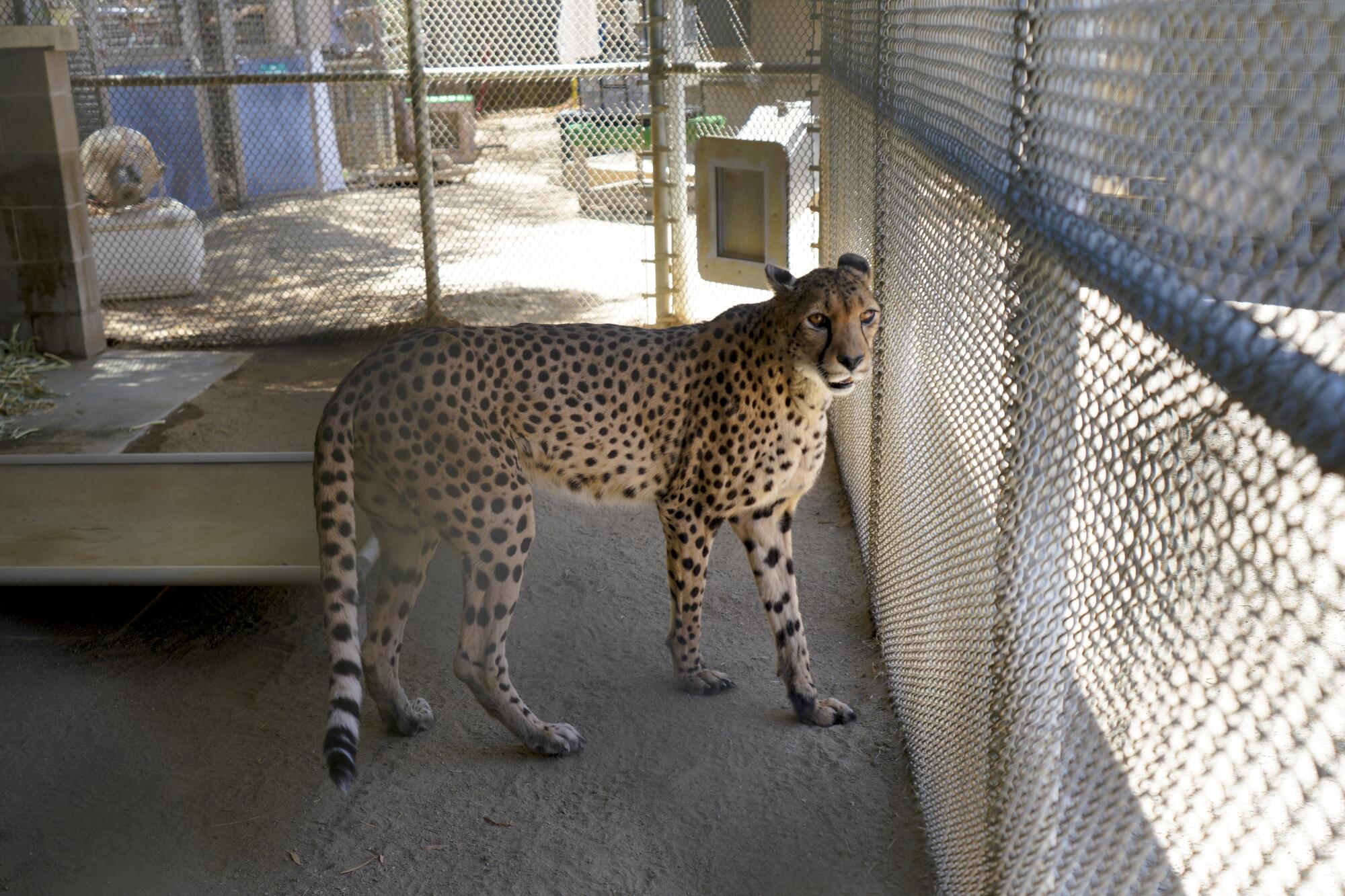
For Amara the cheetah, that means bribing the cat with a yummy morsel of meat or a “bloodsicle,” a frozen chunk of blood for her to lick while she sidles up to the edge of her cage for a quick poke. And for Johnny the coati, a distant relative of the raccoon, that means enticing him with a spoonful of honey inside a plastic container, prompting him to stick his head inside while a vet administers the vaccine.
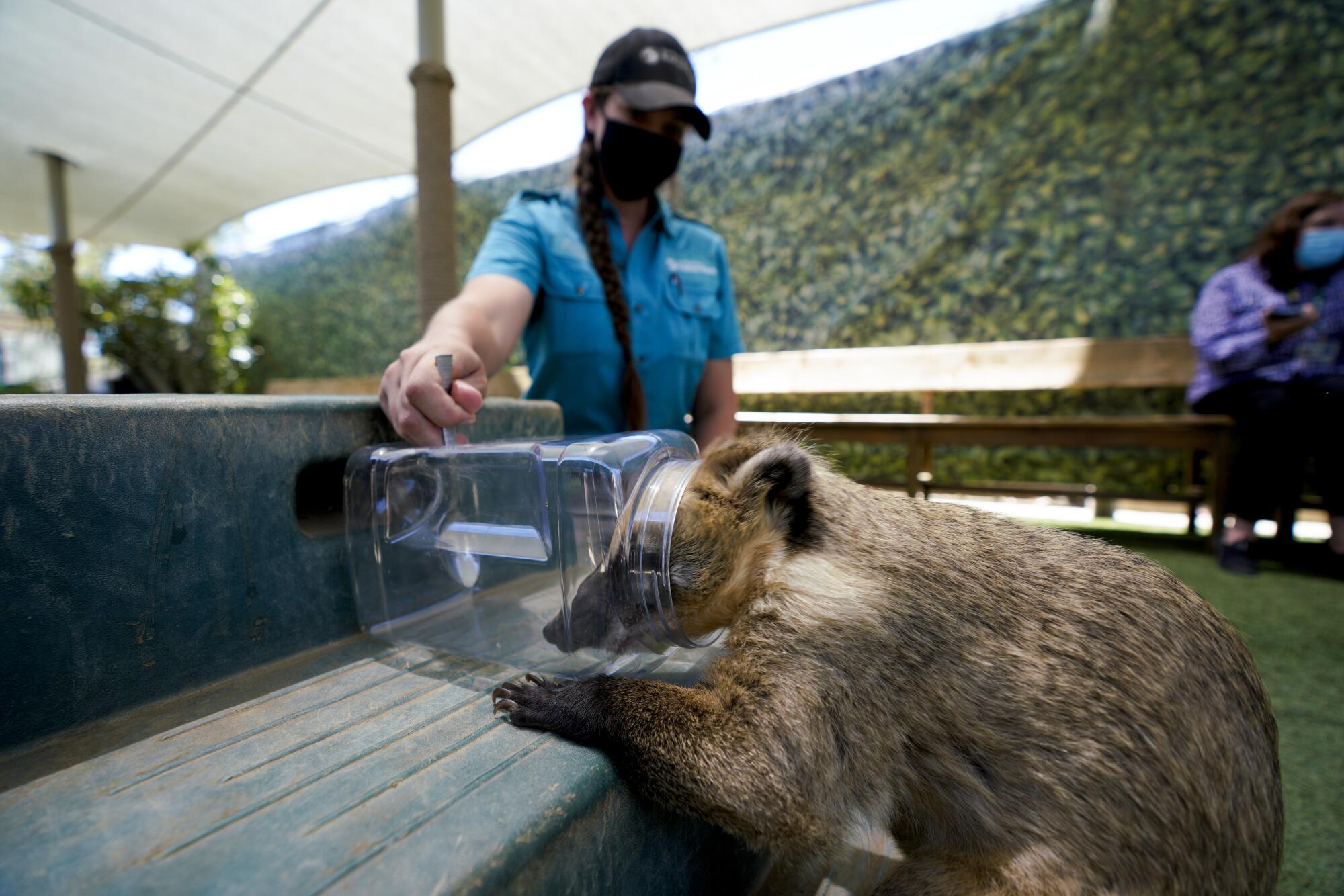
“I would say in easily greater than 75% of the animals that I’ve vaccinated, they don’t even react,” said Dr. Daniel Fredholm, a veterinarian who’s given COVID-19 vaccines to about 40 animals at the Safari Park.
Zookeepers generally avoid anesthetizing animals whenever possible, Peterson said, because they want to avoid any side effects from anesthesia and would rather have the wildlife willingly participate in their own healthcare. So when an animal gets up and walks away before a veterinarian can deliver the shot, they usually just try again later.
In other cases, keepers use what they call a medical squeeze, a narrow metal crate that the animals have learned to walk into and where a vet delivers a shot through a hole in the side. Oddly enough, the hard part is getting them to walk out at the end, said Annette Russel, member of the Safari Park’s wildlife care team.
“They don’t want to leave,” she said. “They get so reinforced in there and stay. ‘No, I’m being an A-plus student. Where’s my good stuff?’ It takes more work to have them exit it than to go in.”
The organization is getting vaccine doses from Zoetis, an animal health company once part of Pfizer. The company’s vaccine, which has been cleared only for use in animals, sparks immunity against COVID-19 by delivering a piece of the surface protein the virus uses to grab onto and infect cells.
The vaccine requires two doses, spaced two weeks apart, for full immunity. Once zookeepers finish administering first doses this week, they’ll begin giving out second doses. Three of the tigers that recently tested positive for the coronavirus had received their first vaccine dose days before they tested positive but had not gotten their second shot.
Researchers are still learning more about how animals respond to COVID-19 vaccines or the virus itself. Scientists have on occasion spotted infections in lions, domestic cats, dogs and minks, among other mammals, according to the Centers for Disease Control and Prevention. Most of these cases have been mild.
It’s the first time apes have been immunized against the coronavirus
Zoo staffers plan to take blood samples from vaccinated animals and measure their immune responses. And keepers are working with Scripps Research to use DNA sequencing to determine which viral variants are infecting wildlife. They’ve already learned that the two snow leopards weren’t infected with the fast-spreading Delta variant, estimated to account for 80% of new human coronavirus cases in the U.S.
“We don’t have any data from other institutions because we’ve been on the forefront of this from the beginning,” Nollens said. “Which is great, but there’s a downside: There’s no lessons learned that you can go to.”
More to Read
Sign up for Essential California
The most important California stories and recommendations in your inbox every morning.
You may occasionally receive promotional content from the Los Angeles Times.
